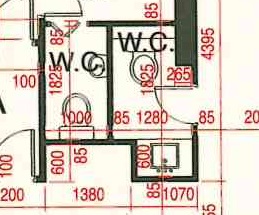Experience Sharing
Miss D did not ask for a hard copy of the sales brochure for a development as she considered the sales brochure too bulky and heavy. Nor did she browse through the electronic copy of the sales brochure. Also, she did not visit the site of the development to get a feel of the surrounding areas. She had only read through the information booklet made available by the vendor before she bought the residential property in the development. After handing over of the residential property, she found that the residential property and the surrounding areas of the development were not what she had expected.
Advice from the SRPA:
- Information booklet published by a vendor or an estate agent is not a substitute of a sales brochure.
- Prospective purchasers are advised to study the sales brochure, in particular the following sections carefully before buying a first-hand residential property:
“Relevant Information” section
- Vendors are required to set out in the “Relevant Information” section information which is specific to the residential properties. The information is known to the vendor but is not known to the general public and is likely to materially affect the enjoyment of a residential property. For example, a vendor may list out in the “relevant information” section the information on which residential properties are installed with “fixed windows”.
Location plan of a development
- The location plan shows the location of a development; the name of every street situated within 250 metres from the boundary of the development; and the 43 types of building, facility or structure situated within 250 metres from the boundary of the development that may affect the daily living of the residents in terms of traffic, noise, air quality, smell, environment, hygiene, fire prevention, and pedestrian flow.
Floor plan of the residential properties in a development
- Sales brochure must set out the floor plans of all of the residential properties in a development/phase of a development. The floor plan of a residential property tells you, among other things, the layout of the residential property, the number of bedrooms and washrooms in the residential property, and whether there is a balcony, a verandah or a utility platform in the residential property.
Visit the site of the development
- Prospective purchasers are advised to visit the site of the development to get to know its surrounding areas.
A floor plan tells a lot
Mr E read through the sales brochure before purchasing a first-hand residential property. He spotted from the floor plan of the residential property which he had ultimately purchased that there was no symbol of windows in one of the washrooms in that residential property. However, he did not find out more about the matter at that moment. After handing over of the residential property, Mr E found out that the washroom did not have any window.
While Mr E did not mind having a washroom without window, he considered that he would feel better if he had raised his query on whether the washrooms had a window with the vendor or the estate agent when he had doubt after he had looked at the floor plan of the residential property.
Advice from the SRPA:

Pay attention to the floor plans
- Normally, a wall is represented by a solid line in a floor plan. If the washrooms are enclosed by solid lines as shown in the diagram, it means the washrooms do not have windows.
- If in doubt, you should ask the vendor or the estate agent.
District in which a development is situated
Mr and Mrs F read the sales brochure for a development which they intended to purchase a first-hand residential property. From the information as set out in the sales brochure, they noted the district to which the development was situated.
Mr and Mrs F thought that the district which the development was situated was the same district of the school net which they had in mind.
However, after further research, they found that the district which the development was situated and as set out in the sales brochure was not the district of the school net they had in mind.
Advice from the SRPA:
- Sales brochure must set out the information on the name of street and street number which the development is situated.
- The Ordinance requires that the information on the district which a development is situated must be set out according to the outline zoning plan or development permission area plan prepared under the Town Planning Ordinance (Cap.131); or a plan that by virtue of section 25(7) of the Urban Renewal Authority Ordinance (Cap. 563) is deemed to be a draft plan prepared by the Town Planning Board for the purposes of the Town Planning Ordinance (Cap. 131).
- The district which a development is situated and as set out in the sales brochure is not the same as the District Council district or the district of the school net.